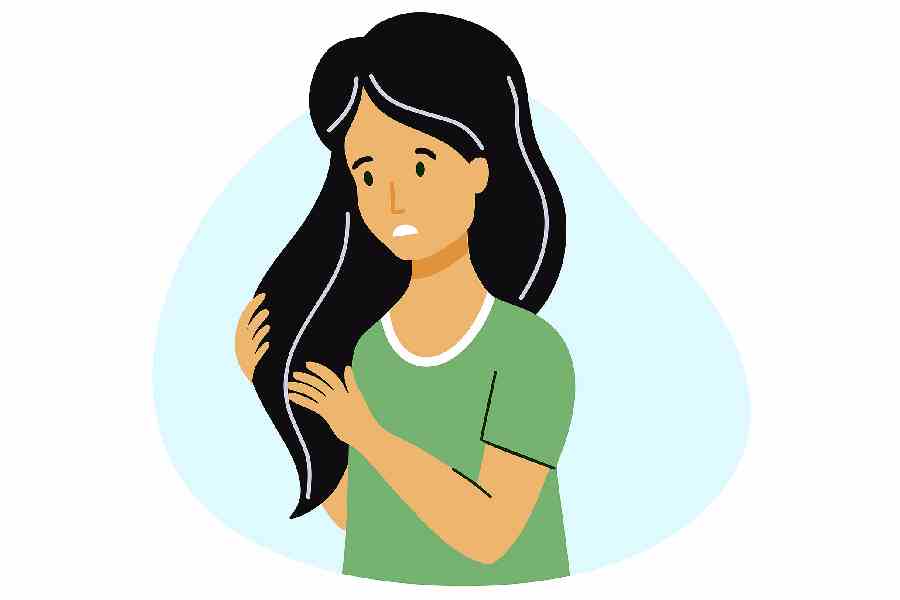Everyone goes grey, both men and women. Some people start to grey at 20 while others reach 60 without white hair. Premature greying can be depressing. Young people may worry that they are losing their beauty and looking old.
There are several ways to tackle grey hair. One is to be happy and go around with a head full of white hair, looking knowledgeable and dignified. Another way is to camouflage this with external dye applications.
Our hair is black because of a pigment in the hair’s cuticle called melanin. The cells which produce melanin die at a certain age. Any hair that grows from that particular follicle after that is colourless or white. When mixed with the remaining black hair, it appears grey.
The age at which our hair greys is genetic and inherited. If our parents greyed young, our pigment-producing cells will also switch off production around the same age.
Many feel that stress turns hair grey. There are stories about people who greyed overnight. This is not strictly true. Stress can, however, increase the production of the hormone cortisol. An excess of cortisol can damage melanocytes. Hair that grows from the damaged follicle will be white.
Sometimes people want a magic pill to cure greying. Suppose hypothyroidism, Vitamin B12, or iron or zinc deficiency has damaged the melanocytes. In that case, correction of these deficiencies can prevent further greying. The damaged follicle, however, will continue to produce only white hair. Therefore, greying will stop where it is, it cannot be reversed.
Hair colouring techniques have been around for thousands of years. About 65 per cent of women and 20 per cent of men use hair dye. They may go to the beauty parlour for this service or do this independently at home. Even after dye application, the roots will be white as the hair grows. This means “touch-up” dying has to be done every four to six weeks.
Permanent hair dye contains chemicals which penetrate into the cuticles of the hair. This can damage hair, making it dry, brittle and easily broken. The scalp can become discoloured. The chemicals used can cause local and generalised allergies, like rash, itching, feeling lightheaded or faint as well as swelling of the mouth, throat or tongue. There can be breathing and swallowing difficulties. The newer hair dyes fortunately do not contain the harsh cancer-causing chemicals found in earlier dyes.
Hair dye should never be applied to eyelashes or eyebrows. It can cause a severe reaction in the eyes and can even lead to blindness. Instead, use an eyebrow pencil to colour the eyebrows or eyelashes.
Beard and moustache hair is coarser than scalp hair. Therefore, only specially-formulated dyes should be used to colour moustaches and beards.
Temporary dyes last for only two hair washes or shampoos. They do not penetrate into the hair shaft. Therefore, they are less likely to cause damage or allergic reactions.
For the safest way to colour hair without side effects, apply a mixture of natural henna and indigo powder. Take one tablespoon of henna, add a few drops of lemon juice, salt or curd and then boiling water, coffee or tea. Leave the mixture overnight. Add a tablespoon of indigo powder in the morning. Divide the hair into four parts. Apply to the hair wearing gloves. Leave it on for two hours. Wash off using a paraben and sulphate-free colour-fast shampoo.
Initially, the hair will be reddish, but it darkens and turns black with repeated use. Depending on the desired final colour, you can change the ratio of indigo and henna.
Initially, you may need to use the combination once a week, but as the hair retains the colour, once a month may be enough.
The writer has a family practice at Vellore and is the author of Staying Healthy in Modern India. If you have any questions on health issues please write to yourhealthgm@yahoo.co.in











